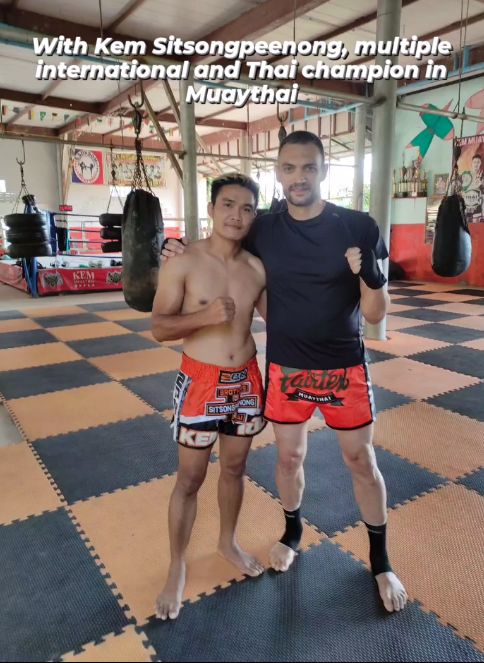Leaderboard
Popular Content
Showing content with the highest reputation since 07/28/2023 in all areas
-
That might be it. If the farang name is Rafael and is from NY that would be him. He does go to Hongthong sometimes and knows the two brothers I was talking about. The other gym I was talking about was Lamnammoon Muay Thai, but it was not him who was there, though he did come once and elbows me in the face while holding pads (I mean by that just slightly touched to make me realize my guard was down, fucking scary but effective). I actually had the privilege to be elbowed by both him and Yodkhunpon which I am kind of happy about ahahah. The trainer taking care of the gym was Nuengtrakan Por Muangubon cause Lamnammoon was mostly in Singapour I think. Anyways, Joe from Hongthong had arranged for me to train there, he told me a bit about growing there and stuff. I think Hongthong is like a neighborhood in Ubon or something like this. I've been wanting to write a review of all the gyms I've trained at in my trips, but I have not yet. Keep doing your great work Kevin. You and Sylvie have had such an impact. I hope one day soon, Thailand offers you honorary citizenship. You guys deserve this.3 points
-
escriures - etchings, strokes, inscriptions, grooves & sweeps, impressions, trace, arcings, adumbration, articulation. Above is a photo of a fighter from Chatchai's shadowboxing with his hands on the hip bones, the most extensive writing strokes taken out. The body itself becomes a gesture of gestures, the feet and torso moves toward the visual language, developing the sense of the roots of writing.3 points
-
Ive been watching some of Chamuakpet's fights as usual, and I noticed something that mightve been obvious to everyone else. He switches stance depending on his opponents stance. (I watched his fights with, Oley, Pepsi, and Chaidet in a trilogy gomma have to watch some others paying attention to this to see if im right or making an assumption) Im curious about out of the many reasons it could be for what mix or single reason he did this. My conclusions have been the rear knee timing and open side point. Though I thought it might be possible he has a similar mental process as Gen Hongthonglek (except opposite) where he prefers to fight other orthodox fighters because of his mental mapping of the body. And I thought that "hey maybe Chamuakpet prefers the mapping of opposite stances and he adjusts to stwitching accordingly" I believe his ability to do this was one of MANY things that made him an incredible fighter. Just like Karuhats ability to switch was important in his style too. Ive noticed in my switch to southpaw the last 3 months that I actually really like the mapping of opposite stances. PS: been a supporter for about 2 years now since ive started Muay Thai thank you for everything Kevin, Sylvie, and the Legends3 points
-
My lad 12 spent a week with Thailand either in the group lesson but more often in PT every morning . We found him to be a great trainer with a really good gym vibe from the local and foreign fighters . There were at least 4 Spanish 2 boys and 2 girls all of who fought and won , one in Bangkok and the other 3 in chiang Mai. It was a great night out watching them at the local stadium. Thailand himself was superb with my son and they got on really well, he made noticeable improvements in the short time we were there As a coach he is a stickler for precision , he wants it right and is prepared to go over and over til you get it right . He was kind and funny and obviously cares about his students, his wife and kids are part of the scene and were lovely . He’s held in high regard for good reason , he’s a brilliant coach and I won’t hesitate to go back hopefully next year with my lad3 points
-
What many do not realize is that ONE has so thoroughly commandeered the social media ecosystem of Muay Thai in Thailand (quite consciously, as part of its marketing approach, absorbing trad social media accounts, controlling messaging across all platforms through various systematically means...and quite brilliantly I would say), that many, many New Gen Muay Thai fans in Thailand, who speak no English at all, now have bought 100% into the ONE Entertainment full power smash aesthetic. Demographically much of it is somewhat a new fan base for Muay Thai, but its very vocal in SoMe post comments, and has influenced the older online gen as well. What we in the West are drawn to in traditional Muay Thai is now is ardently being pushed against by a segment of Thai fandom now, even in the trad ruleset. There is a kind of tug-of-war now between the traditional values of superior fighting and the new International smash values, and hybrid promotions like RWS are kind of caught right in the middle, but seemingly for now siding with trad values for the most part. It does mean though that some trad fighters are just going to go in there and smash on trad cards, which is kind of amazing because this change has occurred in only a few short years.2 points
-
A lot of these thoughts of several years came together for me in side conversation with Arm of Muay Thai Testament Instagram who is looking to perhaps put together a project around Muay Dek fighters of today. I asked him if he could link some present Muay Dek fighters on the rise. This is what he wrote, posted with permission, posted in a series of replies: Strong Muay Dek Fighters Today 1. I was rewatching one kid this morning, as I do with all the kid fights that gets good reception, and this kid from some gym I've never heard of is so good femue. I think the gym is a new addition to Petchyindee's roster now. His name is Kaona Jor. Nopparat The part about Femue being easier to execute at lower weight is so true. Regarding the examples, I only really know the Petchyindee ones but here goes. In no particular order: 1. I was rewatching one kid this morning, as I do with all the kid fights that gets good reception, and this kid from some gym I've never heard of is so good femue. I think the gym is a new addition to Petchyindee's roster now. His name is Kaona Jor. Nopparat2 points
-
This perspective is related to our manifesto of values and a priority on provincial fighting in Thailand.2 points
-
The first fight between Poot Lorlek and Posai Sittiboonlert was recently uploaded to youtube. Posai is one of the earliest great Muay Khao fighters and influential to Dieselnoi, but there's very little footage of him. Poot is one of the GOATs and one of Posai's best wins, it's really cool to see how Posai's style looked against another elite fighter.2 points
-
The championship fight was such a perfect illustration of "basics make champions." Not fancy, not showy, just incredibly solid foundations.2 points
-
This was their fight back in August, where Marie pulled out the upset. I believe Marie was a last minute replacement in that fight. Useful to compare the fights.2 points
-
This was just a really wonderful performance by Barbara, on so many levels, for the RWS Raja belt. You could feel her training in her fight, the way she stays within herself, at surface a very basic approach in terms of weapons/style, but underneath it all is a very important thing that not a lot of Westerns understand. You fight WITH Space. And she persistently denies Marie the space she wants, it ends up blowing up the fight, especially because she brought with her a beautiful very deep, head-sink clinch lock that Marie had no answer at all for (and that Raja let her work from, thank goodness). I have to watch the 2024 fight where Marie upset her in the clinch, but in this one Barbara was loaded for bear. This is the same recipe Sylvie used to beat so many, especially bigger opponents. You fight the Space, not the opponent. And you fight your fight with the belief "If I fight my fight, my way, the right way, you are going to have a very difficult time". I also loved Barbara's 20% - 40% power hands, just using them to touch and semi-pop Marie, to stress the space. No mindless, 100% power combos, actually seeing one's way in the space, and touching the opponent. This is just glorious controlled dern Muay Thai. Barbara's lock was so pure, so good - with a very deep head sink. She also had something that a lot of locking fighters fail to do. Once locked you walk your opponent. Not only do you pivot, or pull, you drag and also literally walk them so that their feet cannot set, so you tangle them, breaking the line of counter control. This is advanced, developed stuff and great to see. A lot of Thai stadium fighters of today don't even do this, its part of the eroding art of clinch. She also was very aware to drag Marie off the ropes so the ref break doesn't come and she could paint longer pictures of her lock dominance. Small touch with big awareness and effect. I don't really understand why Marie decided to fight this fight as a pure femeu fighter, back to the rope. I have to watch their first fight, but this plays exactly into Barbara's closing style. I imagine this is something trainers have been moving her toward? I'm not sure. A very cool, very worthy victory.2 points
-
I've recently been contacted by the head of a small gym in Samut Prakan (below Bangkok). The gym is small, mostly kids, but he's inviting westerners (both female/male) to come train with him and fight out of his gym. If you are in Thailand and wanting an experience of a local, small gym that isn't geared toward commercial training, maybe give this a try. No English, so just use a translator on your phone. Contact on FB: https://www.facebook.com/profile.php?id=61571372517312&mibextid=ZbWKwL https://maps.app.goo.gl/ELoJohV8qcGSSydd62 points
-
Some thoughts on women fighter's bodies and inevitable changes between childhood and adolescence, as well as a changing landscape for Thai women fighters: this age range where female fighters hit their peak and are more or less forced to slow down due to that success (because it's harder to get fights, the side bet becomes enormous, etc) is right around when male fighters hit a rough spot as well. I can't count the number of times I've remarked on how promising some 11-14 year old boy looks and his trainer will wave his hand and say, "let's see if he can make it through motorbikes and girls," which is at around 15-18 years old, when the majority of male fighters also drop off and either become undisciplined or take on salaried jobs. Romantic relationships, increased importance of friend groups outside of the gym, and changes to the body all account for why both male and female fighters have a steep hill as they hit adolescence. Boys have a better incentive to keep fighting, as they might belong to bigger gyms or have better opportunities; girls might be pressured by family to focus on school, or the consequences of romantic (sexual) heterosexual relationships might take them out of fighting, which it doesn't do for boys in the same way. Dangkongfah and Nong Biew are an interesting pair, both listed in Kevin's write up. Nong Biew was kind of this rising star, getting a lot of notoriety and attention as this relentless Muay Khao teenager who could pull in wins with big side bets. Dangkongfah was that, but without any of the social hype; kind of the mavric version of the prize fighter. She could get backers to put money on her and she could win these big fights, but she wasn't taken seriously in the way that other "dao rung" teenage stars are (Nong Biew, Thanonchanok, Sanaejahn, Pornpan, Sawsing, Chommanee, Duannapa). What was so fantastic is that these two young women kept getting these huge side bets put up for them to face each other, they'd get booked on a show, they'd both weigh in and arrive to the venue and then somehow we'd always read about one of them or the other storming out without fighting because something about the side-bet had changed. We even witnessed this first-hand once. I'm not sure they ever fought. But Dangkongfah vs Allycia for the first ever 1 million baht side bet in history was the culmination of what Dangkongfah's trajectory had been. The change in female bodies is also much trickier than it is for male bodies. Male fighters might go up in weight at a rapid clip - look at 2012 for Sangmanee, who rocketed up in weight, taking belts in multiple weight classes within a single year. You'll see this in the Golden Age as well. So this rapid change in the body and increase in weight is not exclusive to either gender, but because women's bodies are coded against sport and strength in culture, when women's bodies become larger, softer, show hips or breasts, all of these get coded as being reasons or signs that she can no longer be a strong fighter. Couple that with the normal number of fighters who retire and drop off, and it seems like the point is proven (even though boys drop off, too, but girls are blamed for that one, too). Dangkongfah, as the example that Kevin is writing about above, was never a small girl. When we met her at 15 she was already quite heavy for her frame. That's just how her body wants to be. She's crazy strong and fit, never seems to gas out, and knows when to push to turn a fight into a blowout. She lost a lot of weight when she was at Fairtex for that short time, and was at her smallest-looking in the ONE fight aganst Meksen that Kevin posted, but she honestly looks the best she ever has in this recent fight. Her body works at the size it's at. Other fighters that are in Kevin's write up, they gained a lot of weight in a short amount of time and it semed to take a toll on their fighting. But this is coupled with training less, fighting less, and in the case of a few of these women, taking time out to give birth to a baby. Which I think is amazing, because that was definitely the end to a woman's career not that long ago. But Sawsing was really the first example I can think of who came back and fought high-profile after having her first son. There are other women who have had children and kept fighting, but usually on local circuits and, again, written off because of their "not the same" bodies after such intense changes as giving birth to a child. Nong Biew fought again after her first baby was born, and it didn't go well. Allycia came back and defended her title, successfully. Faa Chiangrai came back and became WBC World Champion. These things are incredible. Men who have families (and Thais have families very young, so a lot of high profile stadium fighters are fathers to young children) absolutely have difficulties in their own training and fighting due to the responsibilities, but their bodies don't go through the same inalterable changes as birthing parents do. And men aren't written off for becoming fathers, they're kind of given a little bit of sympathy and considered less competitive as a result. Women are totally dismissed once they have children. These women who come back to fighting are just amazing.2 points
-
What a Fight. One of Most Personally Enjoyable Female Fights I've Seen in a Long Time I may not expect others to thrill at this fight as much as Sylvie and I did, but Dangkongfah vs Karolina Lisowska of Poland was just quite an experience for us to watch. A big part of that joy was being so familiar with Thai female fighters in Thailand (Sylvie has fought nearly 150 Thais, easily the most any Westerner has fought), so in explaining what made this fight so awesome for us I get to tell the story of Thai female fighters in general, over the past 10 years or so, so I can point out just how good Dangkongfah's performance was. As a sidenote, none of what I write is significant commentary on Karonlina, a fighter I do not know. Appreciating That Female Fighters, Understanding Their Development The best Thai female fighters, historically, but also still, develop their skills in the side bet circuits where local fight scenes in the provinces produce top fighters in a gambling milieu. The female fighters fight a lot, and the fights are very traditional in style (which is to say, narratively driven, balance, control and dominance being major scoring factors, purity of technique rewarded, and with clinch a significant part of all cards). Local top fighters travel around to other local top fighters in festivals, and the bet sizes go up. This prize-fighting scene produces highly skilled, complex fighters...but they tend to hit their apex around 14-15. That's when they are fighting the most frequently, training hard, and are actively being sharpened by the gambling. Once they get around that age they stop fighting so much (often because it is harder to find opponents, but also in terms of just the changing social status of young women). They can still be very, very good fighters, but they usually flatten out. In the past great fighters like Chomanee, Lomannee, Sawsing, Loma, and Phetjee Jaa came out like this. These are the yodmuay of Thai female fighting. In their later teens they might fight on the Thai National Team (amateur), but really in terms of development by 16 the peak of sidebet skill driving is missing (this side bet process is what traditionally drives the skills of male Thai fighters, well into their late 20s or even 30s, in the National Stadia. The next gen after the one mentioned above, because the side bet scenes have been eroding, haven't really produced the classic female "yodmuay", the one who takes on all comers, and has reached the apex level in the traditional way. Potential side bet yodmuay came through like Nongbiew and Pornphan, pretty strong fighters at 15 or so, but nobody reaching those past levels (Sylvie fought both of these fighters when they were at their apex, giving up significant weight). What ended up happening in this gen is that with the rise of Entertainment Muay Thai mid-level Thai female fighters, and some top level, from the side bet circuit were brought into Entertainment oriented training. A lot of these fighters who had developed a timing and narrative prize fighting game were newly taught bite-down and combo fighting (which is pretty foreign to them). Entertainment Muay Thai wanted clashing, so female Thai fighters (who were timing fighters) learned instead how to just come in with memorized strikes. Some, got good at this, and did well in Entertainment Muay Thai, but most floundered a bit. They were fighting out of their element, away from their skill set. Always the Underdog The interesting thing about Dangkongfah is that she rode this wave of opportunity in Entertainment Muay Thai, she began using combos and clashing, becoming recognized on (televised) Super Champ, which was somewhat promoting her as a Thai story, but she really wasn't pretty with it at all. She in fact had been in the Fairtex stable around with Stamp was taken in and began being fashioned into an Entertainment star, but Dangkongfah was not taken seriously, perhaps viewed somewhat as a backwardish Isaan fighter, from the countryside. What people didn't appreciate, and what Entertainment Muay Thai didn't really care about, about Dangkongfah is that she's a highly developed prize-fighter, she is really, really, REALLY good at managing a fight, in the traditional sense. She doesn't usually LOOK like she's doing much, but she is really good. So Dangkongfah was something of the Cinderella step-sister to Stamp at Fairtex. She left Fairtex, had some recognition on Hard Core (an Entertainment, small-glove show), and then got some revenge on Entertainment Muay Thai. The excellent Allycia Rodrigues beat Stamp for the ONE World Muay Thai title in August of 2020, and then one month later Dangkongfah faced Allycia for the Thailand belt (trad Muay Thai). She beat the ONE World Champion for the belt, not looking pretty at all in her combo-ish strking, but managing the fight with the brilliance of a fighter who had been fighting for prizes since a kid. It must have been a tremendously satisfying win. Allycia would then defend her ONE belt vs Janet Todd 6 months later. Around this time Dangkongfah also took the 112 lb WBC World title vs Souris Manfredi, in a fight set up basically with the aim of giving Souris the opportunity for the much desired title shot - there had been many roadblocks. Again, in a way that was probably frustrating to her opponent, Dangkongfah controlled time and distance, walking away with the belt. She's just such an interesting fighter, but to see it, to feel it, you have to have her in the traditional ruleset. When she fought Meksen in ONE Entertainment Muay Thai, fish out of water trying to trade wonky combos in that style with an experienced fighter, with some visible size, who will just combo cleaning up the middle. It was a blowout. Dangkongfah had gone up to Buakaw's Banchamek gym, which had worked with talented trad female fighters trying to help them fight in the Entertainment, Kickboxing style. Sylvie's long time opponent Nanghong Liangprasert (now using the fighter name: Nong Faasai PK Saenchai) was up there. Again, this seems to largely be trad teaching timing, narrative Muay Thai fighters how to throw Entertainment combos, so they can get fight opportunities in the growing Entertainment versions of the sport. There is another element to this story, and the appreciation of this beautiful fight (on Patong Fight Night) which is that some young Thai side bet fighters end up on commercialized gyms like Banchamek or Fairtex and start weight training and drilling combinations, but many others move out of their teen situations and stop training hard at all. They will be adding combos so they can fight and clash in Entertainment Muay Thai vs Westerners, but they will gain weight pretty quickly. By the time they are 18 or so a 51 kg fighter can easily be a 60+ kg fighter, facing Westerners. They will have added a bite-down style for Entertainment, but many are outside of the rigorous training that made them quite good when they were 14-15. This is enough to say, when we see a Thai female fighter on television, who was once pretty skilled and sharp, often someone Sylvie has fought when they were apex, and they have gained a lot of weight, the first thought is: Are they training hard? Are they running? Will they gas? And, will they just be throwing combos (which really isn't their deeper skill set)? The expectation is that they no longer are peak. This is what made Dangkongfah's performance so stunning, and so enjoyable...so admirable. She has gained a substantial amount of weight. She's only 22, but the guess would be that she was quite far from her peak as a fighter. She was NOT far from her peak...in fact this is probably the best I've ever seen her fight. We've seen maybe 5 fights of hers, including when she was maybe 13 in Isaan, we know her arc really well. She was so good. I feel bad for her opponent Karonlina because there is no way she could know how good Dangkongfah is. And looking at her she might have thought she'd have it easy. This was a late replacement fight. It was NOT easy. This is what I LOVED about Dangkongfah's performance. First, she was able to fight in the traditional style, which is HER art. So much praise for Num Noi (the promoter) for creating a REAL traditional show, right in the heart of Phuket tourism. You need a properly reffed, full-rules setting to see what Dangkongfah is, since a kid. But, what is even more cool is that wherever Dangkongfah is training they gave her a wicked jab. In fact she worked almost the entire fight through one of my favorite inner games for a fighter, Jap-Teep in combination. But these are not memorized combinations, this is using them in a creative game of timing, changing levels, intensity, feints. Entire fights can be fought through just these two strikes, and Dangkongfah is doing it at a very high level. She actually isn't teeping much, but her teep-fake is so hard (with the knee bounce) it makes the opponent bite. The form of that feignt is almost as good as a teep itself, changing levels. Just watching these two lead attacks, and the sharp quality of her jab was a thing of beauty. She had practically given up all together the wild combos she had taken up for Entertainment Muay Thai, she had returned to her timing art. This was very moving for me. By the 3rd round her jab and teep had subtly managed to change Karolina's fight distance, putting her "on the porch" as Sylvie and I like to say, exactly where Dangkongfah wanted her, so she could control, negate and counter. In the 4th Karolina figured it out, her distance was wrong, and she tried to walk through the porch, but it was too late. Dangkonfah is very experienced with this. She just muddied up the 4th with clashes and more jabs and teeps, (a big teep to the ground to establish stylistic dominance) denying any change in the fight. She is expert at spoiling the clinch, and it served her very well, draining away any chance for a change. It had already been decided in the 3rd, in terms of style and narrative, and she just used the 4th to lock it away. Then in the 5th it was a walk home with the lead in the trad style. This is how I like to watch fights. I don't really watch strikes. I see them like anything else, but I like to watch distance control and timing, the way the fighter manages these things. Also, even though she had put on significant weight, she looked FANTASTIC. She wasn't winded at all (maybe a little in the 4th round some of the edge came off?), she was incredibly light on her feet (lighter than in many of her past fights), she moved like an optical illusion, subtly shifting, driving, changing angles. As a basketball fan I have a certain weakness for very light-footed, super skilled big boys like Charles Barkley or Big Baby Davis (above). When athletes are big bodied, but display finesses, touch, speed and agility, its just plain stunning. And looking at her, it even seem possible that even though she's much bigger than even a year ago, she may be power lifting? She just looked fantastic, like even though this isn't a normie body, this is HER body, and she looked totally at home in it, even maybe apex in it. All these things together just made the fight unbelievably joyous to watch (nothing against Karolina who fought admirably). Dankongfah as the continual underdog, from Fairtex dropout to wild Entertainment combo-ist, here getting to do HER art, and with these beautiful new tools, tools of real Muay Thai, in a promotion that favors the trad art. And that she's found a place in her body where she just is being her, being free in the ring, in a non-trad body, using all her skills and instinct. Seeing this wonderful fighter having a place, a trajectory. It meant a lot.2 points
-
I wonder if that is Nungubon's gym. Nungubon does have transfer over to Hongtong (the Hongtong boys are from Ubon), in fact I believe that farang who handles Nungubon's IG trains at Hongtong at times, if I'm not mistaken. More broadly though, thanks for such an informative, and personally grounded post to help others out Joseph, good stuff!2 points
-
Hey Alex, the other big dude here. I've been 3 times in Thailand and to a dozen gyms, so I think I might be able to help a bit. Silk Muay Thai, in Pattaya, is a great suggestion by Kevin. A friend of mine trained there for a while and fought a bunch of time at Max Muay Thai. The level is pretty high and quite a few westerners there. But I never been there. I would say, you need a gym with primarily Westerners or where a few westerners regularly train. I found that training with Thais was a "problem" only when sparring, but not training and clinching. By problem I mean that I find that size difference matter more in sparring. Thai are so strong and technical in the clinch, they can "overcome" size more easily than when sparring. The reach is a killer. For training, with pad holders, most gym will have a pad holder that is bigger for the big guys to whom you'll be assigned. For clinching, they always paired me with the strongest Thai and even if they were never taller than maybe 5'9", 5'10" and usually at least 60lbs lighter, they always, always dominated me. Some made me cry by dominating and raggdolling me around, which they enjoy quite a bit, the tossing around not making me crying lol.. (luckily, I sweat like no one, so who sees tears in sweat). Personally, Hong Thong Muay Thai in Chiang Mai, is my favorite gym, the owner Joe and the team there are just the best. They have very good connections if you want to fight and Chiang Mai is the best city in Thailand for my taste. There are a bunch of westerners there. Big turnaround, but you'll usually find some pretty big guys. The only thing is you'd be arriving in Jan. and the Smoky season starts like end of Feb. I did not have any problem with it, but I was lucky, there was basically none of it that year. Some say it's really bad, others don't. Sitjaopho in Hua Hin is another one with a lot of westerners and a Sweden or Norvegian connection (because one of the twins live there) so there are usually big(ish) guys. I personally did not like this gym, I had a very weird experience and would never go back, but so many people love it. If you want a very traditional setting, there are two brits brothers in Ubon who are like 6'7" and 6'6", significantly taller than me as I am 6'3". They are skinny, around 85kg if I remember well, but at that height, it's was a very good fit for me as I am not a lean 120kg, so not that strong. They were training alone in a gym that closed, they moved to a very traditional gym. I don't know the name but I could find out. They also often go to Hong Thong to train and fight in Chiang Mai. If you want I could put you in contact. Another option is Emerald in Krabi (and Phuket, they now have two gyms). The owner is a former European champion. He's very involved in the training and is there everyday. He's not a small guy and "destroyed' me in the clinch and sparring. But it's a French heavy gym. Which personally I like cause it's my first language and I am half french, but the personal connection might not be as good if you're not. French are... well French. Finally, I you're in Bangkok a few days, I would suggest going to pk saenchai gym. It's one of these gyms who "buys" fighters like Tawanchai and it's quite a treat to train besides a bunch of champions. There are a few westerners, but just to see how hard they train and the level. It's worth it. You have to impose yourself a bit if you want to spare and clinch and all, but once they see you train hard, it's all respect. I would say that's a golden rule for "overweight" people like me, leave it all there. Try not to look tired and try to be among the people who train the hardest. Thai are quite into fat shaming; they have no problem grabbing your belly and shaking it saying "why you so fat". A bit hard on the ego, but.... it is what it is. I found the first few days, they kind of automatically think I am a tourist who knows fuck all about Muay Thai and that I am absolutely out of shape (I think maybe that was the issue at Sitjaphaopho). But once they see your technique is decent and that you train hard and you have heart, then it's all good and I would say, they actually enjoy very much sparring and clinching with giants. They LOVE clinching with big dude and throwing them on the ground. They really enjoy it. So that's my 23 cents. Hope it helps. Please don't hesitate to reach out. I've been to other gyms, but these are the one I stayed for longer.2 points
-
The Enjoyment of Festival Fights https://www.facebook.com/watch/live/?ref=watch_permalink&v=942850751079497 So enjoying this Udon festival fight stream, found via Egokind (https://x.com/Egokind1) This is the real of Muay Thai. Hell, the last fight with kids was pulling 6K viewers in the stream, while RWS was pulling 2K. There was a Japanese fighter earlier (guessing from appearances), maybe big-for-his-age 12, or maybe 14, who gave it his all as the Thai illegal tripped him endlessly, such a very real experience for him. Just hearing the crowd of gamblers and community shout on every strike, even the local commercials, this is just beautiful stuff. Hard to explain how satisfying it is when it its not just a "show" for tourists. I say this, as two...maybe "influencers"?? (who don't have much Muay Thai, or once had Muay Thai, but now seem to have have quite a bit of animosity), go hard at each other in the ring, right now. There is a difference between a "show" that is a commercial product, and what I would call Thai spectacle. Spectacle is understood as unreal (thus, "does not count", un-significant). Thailand's Muay Thai, in its cultural fabric, can weave the spectacle and the real, together...which is why Entertainment Muay Thai, as a tv phenomena in Thailand, was so hard to read. It was completely unreal...spectacle (Thai Fight & MAX in those days)...but then it started making claims of the real, even the "most real". In festival fights like these you can get an entire spectrum of Muay Thai, in all its shades and colors, from spectacle to the very real. Kids on the come up, Old Men, rising stars, big side-bet fights. It's like a fair of Muay Thai. The most wonderful is that you get the full ruleset in the provinces, including repeated and continuous clinch fighting, and very strong aesthetic sense of narrative in scoring. Everyone understands stories are being told, and they are being told at all distances, in a full range of skills, even among the less skilled. It is the spoken story of bodies.2 points
-
Also I think, aside from even the ideas (and values) inside of all our heads is that what must be respected is just how authentically people experience Thailand in differing ways. It is a transportive country, and Muay Thai, no matter how you encounter it, has a way of opening foreigners up and showing themselves a possibility that is extremely meaningful...to them.2 points
-
Yes, Lamnammoon is a perfect example (too bad he kind of has left go of his ambitions to restart his gym). He has that aura, that presence, that vision, that ethic.2 points
-
Thanks for the good words. I used to write a Philosophy blog some years ago, so you could get a sense of my interests and influences from there. Most of it was research around Spinoza, with influences like Deleuze & Guattari, Wittgenstein, Davidson, Autopoesis, Bourdieu, minor influences like Agamben, Negri, Campanella, Vico. Most of the blog was organized around research into Spinoza's lens-grinding and optics. I'm not sure though how to recommend books, as some of the stuff I read feels very, narrow of field? This was my list of 10 greatest philosophers: 1. Spinoza (parallel postulate under a register of power) 2. Plato (formulating the Orphic) 3. Augustine (Immanent Semiotics of truth) 4. Plotinus (Degree of Being transformation of Plato) 5. Davidson (Triangulation and Objectivity) 6. Guattari and Deleuze (Ontology of Affects) 7. Wittgenstein (Language Game) 8. Nietzsche (Ascent of Metaphor) 9. Sophocles (The Surpass of Tragedy) 10. Maturana and Varela (Operational Closure)2 points
-
I have a little more time, let me offer a more complete response. Some of the difficulty in pursuing "authenticity" in Thai gyms is that non-Thai can tend to have pretty romantic visions of what an authentic gym is like. Or, at the very least incomplete pictures. And, there are versions of imagined authenticity. A great deal of Thailand's Muay Thai of the past came out of the kaimuay (camp) teaching or development method, but there were very different kinds of kaimuay, in some way depending on how close you are to Bangkok's National Stadia, or large city centers where there were scenes of weight class fighting, and thus more money put into the sport. In the outer provinces kaimuay could be just a collection of local boys, in Bangkok a gym that had bought up the contracts of successful provincial fighters, combined with other training/trainer interests. But in these settings there was very little one-on-one instruction, as far as we can tell. Instead, fighters were basically workers, laborers, much as ranch-hands were laborers in the Cattle Ranching of the American West. Fighters were very low status, socially, pad men also usually low status, and the development of fighters was a process, come from mixing all the fighters together, in the work of the kaimuay. There's really no Master & Student dynamic going on, as for instance in Asian Martial Arts, or even like coach-centric Western Boxing traditions. It was largely the churn. Fighters would fall out, or they would rise. There were likely exceptions and unique dynamics in gyms, but this was the "authentic" profile of what was happening. So, if you wanted to be part of a kaimuay, as it was, you would just be in the churn. You wouldn't be getting special instruction. You'd be learning by imitation and repetition, and through lots of sparring and clinch. You would have no authority as a customer (in this fantasy), you wouldn't be allowed to leave the camp and go to another gym if things weren't working out (this problem STILL happens for Westerners in Thailand, believe it or not, because Muay Thai gym are very political). You'd be in a state more or less like indentured work. That kaimuay, as it was, largely doesn't exist anymore. Which is to say Thai camps have vestigial aspects of the kaimuay, and some still train with a focus on the churn (which is the true way), but this is very far from going to a camp and taking private lessons, as a paying customer. Now lots of Muay Thai gyms offer privates, and also have adapted training to Western expectations, involving more correction and attention, and some of those still try to maintain something of the kaimuay ethic. But, we are already outside of "authentic" as it historically was. So when Westerners really long for the authentic experience, they are often caught between kinds of gyms, gyms that maintain SOME dimensions of authenticity (just some of that: train in a kaimuay way, focus on Thai techniques and principles, produce Thai stadium fighters themselves, carry a culture of traditional respect and power), but none of them will have all of that (at least as I've seen). Worse, many (even with some authentic qualities, will have started training in more Western ways, holding for combos, focused on Entertainment Muay Thai (which is basically Muay Thai made for tourists and tourism). So its very hard to pick out WHICH authentic elements you are going to get. You could go to a "traditional style" gym known for Muay Khao and just end up clinching endlessly with Westerners who also came there because its known for clinch training. You could go where a true legend of the sport like Arjan Surat still works fighters for the stadia, but there may be nobody your size to train against and with. You could go up to a REAL provincial kaimuay like Santi Gym in Ubon, and just train in the churn of fighters reaching for the stadia, but they probably wouldn't be giving privates (?), and you might find the work boring or isolating. You could go to a "technique" gym like Sitjaopho, where you'll (probably) be pressed together with lots of other Westerners very interested in technique, but in a hybrid way that has approximated the kaimuay churn, while offering lots of correction and teaching, but you won't likely be training with Thai fighters. You could go to Sit Thailand in Chiang Mai, which seems to have a small kaimuay structure, organized around developing his son and a few other good Thais, and take privates from him (a very good teacher), but are there people to train with (this changes a lot in gyms)? Or, you could go the Samart's gym, and be trained by legends like Kongtoranee or Karuhat, and be near (mixed in? I don't know) the Thai kaimuay like processes of their handful of stadium fighters, in a kind of hybrid space? These are just very broad pictures (every gym changes, we don't really spend time in gyms much). Every gym is going to be missing something, probably a lot of things. This is the fundamental problem for Westerners. Muay Thai has more and more become FOR the Westerner. In fact they've now invented a new version of Muay Thai which is FOR the Westerner, and its becoming dominant. But, if Muay Thai wasn't turning its face to the Westerner there would be little room for the Westerner in traditional spaces...because traditional spaces are not only hierarchical (not commercial for customers), they were also businesses in the way that Cattle Ranches were businesses. You wouldn't come from another country and go to a ranch in 1950 in Texas to "learn how to be a cowboy". Part of the problem is that Muay Thai itself, in its authentic strain, is dying, so you can only capture pieces of it, fragments, at best chunks. I'm not an expert in this, only someone with my own experience, but this perspective comes from documenting the Golden Age of the sport, getting to know the great teachers of the art and sport as they are now, but also continually hunting for the kaimuay qualities of "authenticity" for Sylvie herself, as she trains and fights. It's very difficult to find.2 points
-
I recently got a concussion from my last fight. It was a really rough fight and I didn’t perform as well as I could have. It’s been a few weeks and I’m still dealing with some emotional and cognitive symptoms from the concussion (memory issues, irritability etc). I am having a tough time getting back into training… it just all feels “off” and I’m not enjoying it the way I used to. Any tips with recovering from a concussion, and how to get my passion for the sport back?2 points
-
There is really no proven way - that I know of - to rush recovery from concussion, other than getting good sleep, chilling out on secondary jarrings, staying hydrated, eating well. You simply will not fully know how much you are being physically (or even mentally) affected, and you may be feeling the blues because of the vulnerability you experienced in being knocked out. These are not small things. My own thoughts from a distance would be to maybe start building up your training through shadowboxing. Have a whole hour in the Library on shadowboxing as taught by Yodkhunpon. This way you might develop a different feeling for your muay and development, something that isn't jarring you. Everyone is different, and you might still be affected by the concussion, symptoms which can include depression. Here is a long preview of the full MTL session, you can find the whole thing here.2 points
-
2 points
-
Violence and Muay Thai "violence does not participate in any order of reasons, nor any set of forces oriented towards results. It denatures, wrecks, and massacres that which it assaults. Violence does not transform what it assaults; rather, it takes away its form and meaning’" Think about this in terms of Thailand's Muay Thai and fighting. The purpose of the rite and practice is not to denature the other.2 points
-
A form of life that keeps itself in relation to a poetic practice, however that might be, is always in the studio, always in its studio. Its—but in what way do that place and practice belong to it? Isn’t the opposite true—that this form of life is at the mercy of its studio? *** In the mess of papers and books, open or piled upon one another, in the disordered scene of brushes and paints, canvases leaning against the wall, the studio preserves the rough drafts of creation; it records the traces of the arduous process leading from potentiality to act, from the hand that writes to the written page, from the palette to the painting. The studio is the image of potentiality—of the writer’s potentiality to write, of the painter’s or sculptor’s potentiality to paint or sculpt. Attempting to describe one’s own studio thus means attempting to describe the modes and forms of one’s own potentiality—a task that is, at least on first glance, impossible. *** How does one have a potentiality? One cannot have a potentiality; one can only inhabit it. Habito is a frequentative of habeo: to inhabit is a special mode of having, a having so intense that it is no longer possession at all. By dint of having something, we inhabit it, we belong to it. *** from an excerpt from the coming Self-Portrait in the Studio, Agamben Agamben is a compelling philosopher, in that he reads like a worm, chewing through dusty pages, hunting for words. And he chews down into their etymologies, their occasions, their reasons-for-being. He does not present the Grand View. Especially dear, and perhaps not so apparent, is how much he makes from Wittgenstein's concept of a Form of Life, something he alternately traces down to Franciscan Forms of Life (The Highest Poverty), small, local circles of practices that form their own island States, whether they be 13th century monks or players of chess. He is interested in these privacies that are profoundly social. The above passage is from an autobiography - which he approaches as an autoheterogeny - a looking back on his life through the imprint of its having been lived, through the studios of his writing. Like a fossil that leaves the veins of a plant matter, the minute details of a vital living thing, he imagines the studio to be a certain kind of impression, where all the practices of the writer (the painter, the sculptor) have recorded themselves, as lived, inhabited things. He is in this 80s, and he is looking back through this impression, this studio/s, like a photographic negative. He wants us to see, to have lived, is to habituated it. One never possesses life or a life. One can only carve the grooves that remain over time. And he wants to look at his life, by examining its grooves. As a writer of history, as that book worm chewing through words, wriggling back through time, he is just following the runnels and rivulets in the wood. He sees it like this. We film a lot in these kinds of studio spaces in Thailand, gyms that once were heart-beats throbbing with kicked bags, dripping with briney body water, but now are covered with photographs burned by even decades of sunlight, their reputations and their ways of life baked in, and even no longer function, only testifying...an immortal, vital testament, but still only testifying. above, Dejrat home gym, Bangkok And then many of these houses of Muay still are beating out the rhythms, driven by the ardor of the man that leads them, even into old age. Furnaces of agonism and Buddhistic peace, hierarchies of selves stacked in simple geometries, like that of Dejat gym, but upon what-already-has-been, with that eternal sense of the Past holding much more than a Future. This is an illusion. This is something Westerners face when they first come to Thailand, open-eyed. Everything - every surface - is brimming with the new, the unexpected, one cannot see the what-already-has-been which sinks down into sedimented layers of granite & limestone selves. Yes, the age of things is seen, but not the already-has-been completed, the lost-to-the-past, just yet. Instead the present moment seems to be breaking like the bow of a boat, cresting the waters. This is where you are becoming. Agamben invites us to understand - to see - that where we have entered is already a studio of what-already-has-been, we are working within a fossil. Lives have already passed through, lives have already been. You are standing in the bones of memory. You are in an architecture of things that have past, crystalized intentions and aches pressed through an art and a way of Life. So much of what you are standing in is what-already-has-been. It's done. It's over. We are reading an article written in a Thai boxing magazine in the early 1990s - having it translated, will post it - that bemoans the present era then (1990s), the time of Karuhats, Hippys and Oleys, the Age we now call "Golden". It stands on the ruins of the true Muay Thai of the 1960s and 1970s, the Age of Men...it says. As we age and mature we come to feel more and more of what has past, of things having-been, but what truly is widening is our gaze. We have always been standing in those bones, what Agamben wants us to see as our habits, the repetitions of having lived, the carved-out. Even in our most pristinely new moment, we were in those bones of it all, with blinders on. All that has happened in that our vision has widened to see it. Instead what this vision should call us to see is not the widening gaze of what-has-been, but rather the consumate gaze back down into what we are creating now, what carvings, what habituations of Selves that we are inhabiting. Inhabiting - Agamben likes this word, this Heideggerian word, I do not. It makes too much of us a Spirit, a ghosting thing, like we are haunting our lives. It is not like that. I'm writing about the ambitions of those that come to Thailand to beat out a new and authentic self, to expose themselves to new condition, to habituate in a new way, to manifest differently, and what it means to stand in the bones of an art, and a history. And even more readily, to stand in the bones of a house, a gym, a studio, which has made many men, and is always brimming with the what's already-has-been, almost cluttered with it. The hunt of the foreigner in the country: Where do I find the "authentic"? Where do I find that which isn't the already-has-been? Where do I find the "studio"? Again and again the more experienced foreigner, the one who has gained eyes to see beyond the initial innocence of the projected exotic - will be disappointed. They will travel from gym to gym and find the already-has-been. Because this is the natural state. This is the life and state of the artist. Nothing has changed. Only your eyes. Let them change again. A page from Nicola Chiaromonte’s notebooks contains an extraordinary meditation on what remains of a life. For him the essential issue is not what we have or have not had—the true question is, rather, “what remains? . . . what remains of all the days and years that we lived as we could, that is, lived according to a necessity whose law we cannot even now decipher, but at the same time lived as it happened, which is to say, by chance?” The answer is that what remains, if it remains, is “that which one is, that which one was: the memory of having been ‘beautiful,’ as Plotinus would say, and the ability to keep it alive even now. Love remains, if one felt it, the enthusiasm for noble actions, for the traces of nobility and valor found in the dross of life. What remains, if it remains, is the ability to hold that what was good was good, what was bad was bad, and that nothing one might do can change that. What remains is what was, what deserves to continue and last, what stays.” The answer seems so clear and forthright that the words that conclude the brief meditation pass unobserved: “And of us, of that Ego from which we can never detach ourselves and which we can never abjure, nothing remains.” And yet, I believe that these final, quiet words lend sense to the answer that precedes them. The good—even if Chiaromonte insists on its “staying” and “lasting”—is not a substance with no relation to our witnessing of it—rather, only this “of us nothing remains” guarantees that something good remains. The good is somehow indiscernible from our cancelling ourselves in it; it lives only by the seal and arabesque that our disappearance marks upon it. This is why we cannot detach ourselves from ourselves or abjure ourselves. Who is “I”? Who are “we”? Only this vanishing, this holding our breath for something higher that, nevertheless, draws life and inspiration from our bated breath. And nothing says more, nothing is more unmistakably unique than that tacit vanishing, nothing more moving than that adventurous disappearance. - Agamben I think of foreign fighters and ardent students that travel to Nungubon's gym in Ubon. A small studio of a space that is made from his home. It is in the model of a home kaimuay that has made so many fighters of Thailand's Muay Thai. And it is a museum of a space, filled with the pieces of his life and career, just as kaimuay have always been. You are in the bones of it, but still it is what already-has-been. We are standing with a man who has lived the art, in the ring, in the gym. The carved man, but you will also know that it already has passed. This is not an error. This is not flawed. This is the natural state of things. All things already-have-been. Put down the chalice of The Authentic. Everything is already heavily allowed with the past, with the done. It is only you who pulls the thread forward. You and those you metronome with. The above section from Agamben (bolded) is quite beautiful. It is a subtle drawing out of a Spinoza maxim, like a silken thread from the side of an Idea that is usually taken in a very different way. Spinoza held that there is some portion of the Mind that is Eternal. The Truth within the Mind - not our ego, not our feelings or personal ideas or intents - remains for all eternity. As Agamben draws it out he evokes the ephemera of The Ego in Buddhism, that illusive dimension of ourselves organized around everything that is supposed to matter. Of that, nothing will remain. Why? Because only the Good will remain. Agamben's invocation of the studio, the physical space of the practice, all the materiality of that practice, a sum of those real repetitions that reflect our burning fires, our furnaces, but also the Form of Life that is the art into which we are pressed, suggest that this is more of what is the Good, more of what remains. He wants us to see that all the while when our heart has been beating, we've been carving. What is it that you are carving? What of it will remain? What is the Good. As fighters this comes into deeper question, for the fight is among the most thin and veiled of performances, best witnessed in person by the ropes. It can be photographed, it can be written about, but what it truly is vanishes like the midnight bloom of a cragged flower, for only the few. And, the endless poundings of the bag, the light-footed shadowboxings? What is to be of that Good, washing into inarticulate neutrality by the Sea? We meet these incredible men, these spiritual athletes, and what has been made by them? Where does it reside? Where is the studio of their permanence? above, Nungubon's home gym, Ubon above, Takrowlek's home gym garden, Bangkok One knows something only if one loves it—or as Elsa would say, “only one who loves knows.” The Indo-European root that means “to know” is a homonym for the one that means “to be born.” To know [conoscere] means to be born together, to be generated or regenerated by the thing known. This, and nothing but this, is the meaning of loving. And yet, it is precisely this type of love that is so difficult to find among those who believe they know. In fact, the opposite often occurs—that those who dedicate themselves to the study of a writer or an object end up developing a feeling of superiority towards them, almost a sort of contempt. This is why it is best to expunge from the verb “to know” all merely cognitive claims (cognitio in Latin is originally a legal term meaning the procedures for a judge’s inquiry). For my own part, I do not think we can pick up a book we love without feeling our heart racing, or truly know a creature or thing without being reborn in them and with them. - Agamben As we come to study we violate ourselves, our boundaries. We break apart what has been. A new concresence. In this falls the onus on the artist, on the fighter, in this it is all of us. In many ways we are all nomads without a studio, in that we are ever stepping into the ruins of what already-has-been. The bones of it are already stacked around us, even when in youth you do not see them in your tunneling desire. We travel about like a potter who may find a kiln here or there, and we are made hybrid, cyborg to the matter of which it is made. We throw our clay as we might, and at many times we have to build the kiln ourselves, through an art of kiln-making which we have divined from lore & other practices we intuit. We inhabit houses of the art's keeping at times, but again and again The Good must only be the habits we keep as we build, and the respect we pay to what others have etched and thrown, in their kilns, in the kilns that have been. The Ego will not remain, it will vanish. Instead as we bend ourselves toward a Form of Life, and our respect for it. This is a form of cooking. We are cooked by our knowing. By our doing. A medieval legend about Virgil, whom popular tradition had turned into a magician, relates that upon realizing he was old he employed his arts to regain his youth. After having given the necessary instructions to a faithful servant, he had himself cut up into pieces, salted, and cooked in a pot, warning that no one should look inside the pot before it was time. But the servant—or, according to another version, the emperor—opened the pot too soon. “At the point,” the legend recounts, “there was seen an entirely naked child who circled three times around the tub containing the meat of Virgil and then vanished and of the poet nothing remained.” Recalling this legend in the Diaspalmata, Kierkegaard bitterly comments, “I dare say that I also peered too soon into the cauldron, into the cauldron of life and the historical process, and most likely will never manage to become more than a child.” Maturing is letting oneself be cooked by life, letting oneself blindly fall—like a fruit—wherever. Remaining an infant is wanting to open the pot, wanting to see immediately even what you are not supposed to look at. But how can one not feel sympathy for those people in the fables who recklessly open the forbidden door. We are all as it cooks tempting to look in the pot, we think it is over. The process close to being done. The practices, our inhabitations surely have done the cooking they are supposed to have done. There's been enough heat, enough time, one senses. Maybe its not completely done, but a little peek won't hurt. But its exactly that. You cannot look. It's not for you to see. above, Jaroensap's home gym, Bangkok The above is Baramajanmuay Ket Sriyapai, ปรมาจารย์มวย เขตร์ ศรียาภัย, the Muay Chaiya master of Arjan Surat, a portrait photo that hangs on the wall of the Dejrat gym in Bangkok. In some material sense this is all that remains of him. Arjan Surat, who still runs this hallowed personal space where hanging bags drape in a garage where he literally parks his car, talks about other Muay Boran manifestations in Thailand, lineages that purports ancient knowledge or ways of fighting. He laughs in his gruff and dismissive gravel voice pointing at the portrait "How can they know, if he didn't know?" But the habits, the inhabitance as Agamben would have it, of Baramajanmuay Ket Sriyapai also live remaining in Arjan Surat himself. The carvings of life, his studio, his life, made by the beating heart of Baramajanmuay Ket Sriyapai have also carved upon Arjan Surat who is now in his 70s, bent on holding daily pads for stadium fighters until 80. "Eeeevery-day" he says in English, drawing out the words to indicate time, the length of it. You do this eeeevery-day. You carve. You are standing in the bones of it, no matter where you are. It all, it all has already past. It's over. It's done. And you pull out this silken thread, weaving it forward, in the very thing you are carving. It looks like it is all finished, but it is barely there.2 points
-
Consider not turnover over the kick, and instead working on the classic more upright Golden Kick: You can read more about it here: https://8limbsus.com/muay-thai-thailand/golden-kick-how-to-improve-your-thai-kick The turn over aspect of the kick is often over emphasized by non-Thai krus who don't really see all the connective tissue in the Thai Kick (generally). Most of the classic kicks turn very late in the arc, because they want to keep the opponent centered, and they don't want to be out of position for more continuous offensive flow. You can see more about Karuhat's kick here: #111 The Karuhat Rosetta Stone 7 - The Secrets of the Matador (83 min) watch it here Karuhat is the most documented Golden Age legend in history, thanks to the sum of all the filming and commentary we've been able to do with him. This session though provide the key to understanding all the other sessions. And there is a very special focus on his particular Golden Kick. An alternate kicking style: #143 Takrowlek Dejrat - Master of the Low Kick (90 min) watch it here One of the great low kicking fighters of the Golden Age teaches his squared up, pressuring, Muay Beuk fight philosophy which uses an extremely fast, vertical low kicking technique that keeps the opponent exactly where you want them. This punishing style, built on defense and ring control is extremely effective, using techniques that are not often taught. Study the low kick in a way you haven't seen before.2 points
-
After a little bit of research, and contemplation, I figured the kyokushin close quarters kicking is the best approach to study.2 points
-
Karuhat is not a tall fighter, and usually fought opponents much bigger, taller than him. He's a difficult fighter to emulate because his eyes were so good, and his timing impeccable, but his muay is full of great qualities.2 points
-
It feels like after 10 months of doing Muay Thai, these regular classes aren't really doing much help for me. We are doing 5 punch, 3 kick combos, that they are hard to apply in real sparring. Or we are hitting bags. It feels like Sparring with mouthguard has dramatically improved my ability by 10x fold. I literally get 10 practices in 1. It forces me to jab correctly, slip, kick with good rotation. Does anyone feel the same way? I still go to practice, but sparring is much more powerful in technique improvement.2 points
-
Hey, I just saw this now, I'm surprised nobody replied before. When I was in Thailand in 2021/22, I also did several privates with Yodkhunpon and enjoyed it very much! I paid and did the sessions at Petchrungruang gym in Pattaya and the initial contact was made by Sylvie, whom I wrote on facebook (thanks again!). The sessions after that, I arranged directly with Yodkhunpon. Unfortunately I havent been back to Thailand since, so I like to read about other people's experiences, so keep writing people! Has anyone been at Singha Mawyn in Bkk? Superbon used to train there, but more importantly the trainers are legends themselves e.g. Namsaknoi and Khaolan Kaovichit. Would also be interested in reading about Kiatphontip just outside of Bkk, and other semi-rural settings.2 points
-
I’ve heard a lot about Hong Thong, and it’s cool you got to train there for a month. The air quality during that time sounds rough, so thanks for the heads-up—I'll definitely keep that in mind if I plan a trip in March. The gym’s focus on fighting sounds perfect if you’re looking to compete. I’ve had similar experiences where the training quality depends on your partners, so I get that. Private sessions with Joe seem like a solid idea, especially for clinch work since Muay Khao fighters really know their stuff.2 points
-
above, the cut back stem of our Adenium obesum "Desert Rose" and the bloom that came from the cutting, photo taken this morning Karuhat's Flower September 24th, 2024 - In the development of skills in Muay Thai everyone is trying to "add" things. New techniques, new training, new moves, new tricks. This is a desert Rose we bought when traveling with Karuhat in Isaan. We saw the unusual plant at a rest stop, it reminded me of the bulbous, massive trees in The Little Prince, so we bought one. He told us that in Thai it's called "The Show Stopper", or some rough equivalent to that, because its flowers were so stunning people walking by just have to stop and look. If you know Karuhat's Muay Thai, perhaps the most beautiful that's ever been, it seemed very fitting that we bought this plant with him. We're not gardeners, we keep a yard somewhat inexpertly. And we read up on the plant, how it has growing seasons, its general needs. But no matter what it did the flowers wouldn't come. Little proto-buds would show, and then die and drop off, even when the branches were verdant. He knows how to care for them, and would visit us and help steer us the right way. Here is an early visit when the plant was quite bare. It wouldn't flower for a year. He visited again and told us "You have to cut it back", and then told us about something you paint onto the cutting end to seal it, to force the lift energies into a bloom. Before Sylvie left to travel a week ago she cut it back here. A week later this bloom at photo top. This is the thing about Thailand's Muay Thai. It seems like when you come here its just this incredibly verdant fight culture. There are techniques and beautiful fighters, and gyms and krus everywhere. It feels like all this is quite natural, like it just spontaneously grew here, and as a fighter a lot of the times it feels like you are just walking around and picking wonderful fruits that you put in your fighter basket. You want this elbow here, and this guard over here. And this "combo" (there really aren't combos in Thailand's Muay Thai, but we turn it into combos so they can be exported). And, if you are Instagram and watching demos, you are collecting these techniques, some of them quite far removed from their source. The Secret of Restraint, of Cutting Away This is the secret about Thailand's Muay Thai. Once you have the plant well soiled, watered and fertilized, all those "flowers" that are loved come from pruning, from "cutting back". You cut back on the branch to produce the bloom. It's not an additive process. And this is the part of the art that simply isn't known much at all throughout the rest of the world...how to garden the muay of a fighter. Everyone is copying flowers, picking them off branches, mixing them with aggression, trying to change the rules of the sport to force more and more flowers (knockouts, etc)...but the actual gardening of the art is dying. Which branches need to be cut back and when? This is one of the concerns with the new commercialized much more aggressive versions of Entertainment Muay Thai. Some of most important cutting backs and prunings of Muay Thai occur at the emotional level, almost a spiritual level. It grows at the root of many of our impulses toward violence. Feelings of anger, even rage, are intentionally prune back. They are not the emotions of action (like they are often in the West). The pruning back of these feelings and their display is one of the most important aspects of Thailand's Muay Thai, and is probably quite close to the reason why it produces such beautiful blooms, blooms that are the envy of the world. It's because, even though being one of the most violent combat sports (at times), it is traditionally powerfully cut back at the emotional level. The Technical and Psychological An example of the unpruned emotion can be seen in Namkabuan's fights vs Matee. There is this highlight below where he somewhat spectacularly falls out of the ring and just jumps back in attacking, not even waiting for the ref to reset the fight. There is another when he unleashes wild elbows that make highlight reels, falling off balance but it all feeling like an onslaught. As mentioned below, for Namkabuan the whole thing felt very unpruned and wasn't something to be praised for. These are events that in Entertainment versions would be cheered on by shouting announcers and bounced all over IG streams...these moments of loss of control are almost the purpose of the new versions of Muay Thai, quietly undermining the life force art that gives Muay Thai its technical brilliance and even more so the sublime fights of the past. Namkabuan is now past, Rest in Power glorious legend. It is the control, but even more so, the pruning back of the plant that is the soul, if you want the bloom. When I see foreign fighters, who clearly train very, very hard in their techniques, unleashing high volume strikes, one after the other after the other after the other, often in memorized combinations they've learned on the pads and on the bag, their is a very real sense that this is a plant that is incredibly overgrown. There are leaves and leaves, but no blooms. They were like our plant, before Karuhat told us that it needs to be cut back. Unfortunately though, this is an art, and an aesthetic that isn't easily passed onto others, especially to non-Thais. That's because it comes from the Form of Life that is Thailand's Muay Thai, grown in its small kaimuay across the whole country, in its festivals and local stadia. In its urban gyms, its traditional stadia, within the gambers and their aesthetics. It's a cultural expression, but it is founded upon a sense of pruning back. Of gardening. When I saw this flower today I took a picture of it and sent it to Sylvie who as I mentioned is in Italy. I was just astounded at how fast and strong the bloom had come after we had been waiting for it for a year or more, simply by cutting it back (and knowing to paint the cutting over with a special mixture). The parallels to Muay Thai seemed so plentiful, for fighters very often try to develop certain techniques or qualities, often for years, but that "bloom" never comes, or only comes palely. I wanted to know how she saw process of pruning in Muay Thai, as she is a fighter who has engaged in the sport in Thailand like no other, just massive amounts of fights, the most prolific Western Muay Thai fighter in history, an unparalleled study with legends, and endless hours in the training ring. Here is he secret for blooms that are slow to come. Prune back. This is some of our conversation: vocabulary: Jangwah (จังหวะ) = rhythm, timing, Tammachat (ธรรมชาติ) = natural, indicated by being smooth & at ease, Ning (นิ่ง) = being at ease & unaffected, Mua (มัว) = obscure, clouded, confused Perspectives on Growth and Pruning There at least two very distinct but related levels to thinking about this. As a fighter, struggling to improve in the art, best is not to think primarily of additive processes. The pruning back of oneself, both at the level of techniques, tactics and strategy, but also at the emotional level very well may be the path to much strained for growth. To cut back isn't to "do less", its actually cutting off a living branch, sealing it off, so that its vital force will force itself out into bloom, further down, closer to the main stem. Technically, the main stems are the foundational principles and movements of the sport...which is why some of the most spectacular Muay Thai fighters of Thailand actually are fighting from place of basics. The second level of thinking about this is about the sport itself. We are told "Muay Thai has to grow!" or, "It's great that the sport is growing!" in its various new hybrid incarnations, many of them adopting Western or Internalized emotional pictures of fighting. Additive growth does not necessarily produce the flowers. And the tourism of Muay Thai is founded on the fact that it produces so many show stopping blooms, unparalleled skills and a form of fighting that exists nowhere else in the world. Right now, in this generation, we still have men who know how to prune in the art. They were raised in the kaimuay of traditional Muay Thai, they fought in its rings, and they understand the process of cutting back, the aesthetics of control. But this generation of knowledge is vulnerable. They are at an age already when maybe 10 more years and they'll no longer be shaping fighters. The processes of Muay Thai's creation lies withing their knowledge of its creation. It isn't in the "techniques". It isn't bio-mechanical. It's a spirit of understanding the flower of violence, and what it means for the human being...distilled into a craft, a craft of pruned-back fighting. btw, as a note, this is Arjan Surat who we mention in our texts. He is perhaps among the oldest of this last gen, holding pads every day in his 70s.2 points
-
I don’t see how you can go wrong at any of the gyms you mention , sit Thailand has a great gym and is technically brilliant. My son 13 was there last year and they treated him so well , we are back now and they seem to be growing with more trainers than before . They fight regularly and have Thais and farangs fighting . They seem to have a connection with Spain as both times there have been decent Spanish fighters there . They have girls training and fighting . It’s 75bht in a bolt from the old town and takes 15 mins Hongthong is a similar distance from our hotel . Ultimately people will tell you their preference but that might not suit you2 points
-
I've been to Watchara gym a few times for PT but haven't tried their group classes. Its more of a "casual" gym (its air conditioned (which is not a bad thing!), clientele are (mainly) non-fighters) but the trainers are knowledgeable/experienced. Honestly i've hopped around in BKK for a bit and i haven't come across objectively bad trainers - its more about finding one that has a personality/teaching style that fits you. The gym is used to foreigners (you book classes through Klook). If you do go for PTs I would recommend Em - he does focus on technique and speaks very good English. You can do privates with them on Sundays (most gyms close on Sundays). If you go gym hopping in BKK and want more training on Sunday, you could try them out for a Sunday PT session.2 points
-
Sometimes the podcasts go into these concepts. Not the Library though, it's all documentation. I write about these some on my subforum, for instance this article:2 points
-
Wangchannoi is no longer at the gym, he has moved to a small gym in Cambodia. Bangsaen had indicated westerners were welcome to train with the gym, but it Isa true Thai gym and ther aren't many options nearby so staying at the gym seems most likely the only accommodation if you intend to stay beyond a couple days. They don't have social media in English, so I'd recommend just going to the gym and pleading your case: https://maps.app.goo.gl/4N8wMms2sU3xkeBbA2 points
-
Thanks for providing this. I am beginner as well been only training for about a few months and am looking to suscribe to the pattern to access some of these sessions. Just curious are there specific exercises or bag work drills or other things that the videos clearly lay out that we can practice or is it more the knowledge of the techniques and then we have to figure out how to put the techniques into practice? I also wanted to say thank you and Sylvie so much for putting this together. The videos I have watched of you guys on YouTube really put into perspective the real essence of the Muay Thai culture that I feel is sometimes lacking in the gym I train in here in North America. My gym I train at is good for training but I do not get the same kind of education about the philosophy, spirituality and ethics I get in some of your podcast videos so thank you. Are there any specifics videos on the library that you suggest that has learnings on the philosophy or spiritual side of Muay Thai from any of the legends or Krus. Thank you too much again, your work is great appreciated!2 points
-
Hi Warren It was very quiet when I was there. A few local guys and 2-4 foreigners but that can change and I'm sure this gym has got more popular. You can schedule privates for whenever you want. The attention to detail here is unbelievable and I highly recommend you train at this gym. In my experience, everyone was really good training partners and I learnt loads everyday.2 points
-
There is no video keeping. Patrons get access to the Library, according to tier. $10 subscription will give you access to the entire 140+ video Library, and everything else published (like technique vlogs, podcasts, etc), as long as you are a patron. $1 gives you access to the last 5 sessions we've published, but these keep changing. The truth is that we don't update the tiers very quickly, so right now the $1 tier has the last 11 sessions we've published. But once updated it will be only the 5 most recent. You can see the tiers and their sessions always here, in the Table of Contents: https://www.patreon.com/posts/muay-thai-uncut-70581992 points
-
First of all I’d like to thank Sylvie for arranging this for us even though we’ve never met or spoken before , it was a really kind gesture by her to help a total stranger We arrived in BKk last night at 9pm and my son Lewis 12 had a private lesson with Sagat this morning at Jaroenthong Muay Thai gym. Everyone at the gym was really welcoming and gave us plenty of bottled water to cool down. Sagat was really friendly , first they did a warm up which was slightly different to his at home and consisted of a lot of stretching . This was before the lesson was supposed to start so a bonus . Lewis has been doing Muay Thai for nearly 4 years so Sagat spent much of the time fine tuning his basics , like he said perfect the basics and the rest is easy . Junior Muay Thai in U.K. is no head contact but Like Sagat said he will be 16 in no time he needs to protect his head . They worked on punches and guard for 30 minutes stopping to let Lewis get water and cool down . Remember we’ve just come from Manchester England and it’s nowhere near the temp of BKK so he’s not used to the heat yet . The thing I liked is he has great patience and is very enthusiastic when you get it right , his attention to detail is amazing . He sees every tiny fault and works on helping you correct it . Lewis really enjoyed working with him , and for somebody 65 he’s remarkably fit . They ended the session doing sit ups and press ups together. We are going back tomorrow on a Sunday ! If you are in Bangkok and want to train with a legend then I’d highly recommend Sagat , he’s not cheap 3000baht but it’s not every day you get to train with an icon of the sport we are going to Chiang Mai on Tuesday night and hoping to train at Kru Thailands gym so will post a review later in the week2 points
-
Kathoey is not a Thailand-specific cultural identity, so you can use this word for yourself here without any problem. It's not the most polite word, but it is the most common word and speaking to your trainers and promoters, this is the word everyone will use. It is also how Trans folks here refer to themselves, outside of formal writing. I think your chances would be best for fighting up in the North, in Chiang Mai, as there are so many stadia, fights almost every night, and the levels are along a spectrum. There are a number of Kathoey fighters active right now up in the North, sometimes coming down to fight in Bangkok, but with good recognition and presence in the stadia of Chiang Mai. You could also go specifically to train with Nong Toom at her gym in Bangkok. That will absolutely provide a supportive training environment and Parinya (Nong Toom) will have the kinds of connections you'd need to fight, but the opportunities would likely be less frequent than in Chiang Mai. I also am catching myself as I'm saying this, because even though there are tons of fights in Chiang Mai and they won't be making a big deal about your gender, there is never any guarantee that opponents will be available for anyone all the time; it will depend on size and skill matching.2 points
-
It's awesome to hear you studying the fights of Chamuakpet. I haven't looked at them closely in a while so I couldn't say, but I like your idea that he's tracking the openside with his knee. Karuhat's switches seemed to be score relevant, closing the openside when he had the lead, etc.2 points
-
There is a really good 2+ hour video in the Muay Thai Library project which documents the legend Karuhat deciding to switch Sylvie from orthodox to Southpaw. It shows you how he did it, and talks about the reasons why he did it. It's really good: Karuhat was a switching fighter, one of the best, so some of this is just his own ability to step into southpaw, but he was trying to solve specific things in Sylvie's style. She ended up fighting for about a year and a half in Southpaw before switching back. I think its great, honestly. I prefer her as a southpaw fighter. She eats up space a little bit more, is much stronger up front, and kicks better. The problem with most moves to Southpaw is that offensive weapons may very well improve, but defense will suffer until fully developed, so in fights the comfort level might not be there for a long time. Generally though, if you feel better in southpaw that is a huge reason to go that way. And, southpaws have natural advantages in most matchups, you automatically gain those.2 points
-
It is so refreshingly free of norms and so laden with them in some ways. I have fallen in love with my muay and see it as something I have a relationship with, a living expression of who I am, and shaping my muay has allowed me to 'celebrate' the parts of myself its expressing! Thank you for the response!2 points
-
Before I ventured into the Muaythai world in Thailand, I did extensive research and decided that I would like to spend almost a month training. Sylvies videos about the expanded web of gyms and their preferences turned my attention to Kem Muaythai gym in Khao Yai simply because of her notion that Kem gives lots of attention to basics and clinching. Also, the other part of me leaned towards gyms in Pukhet since this was my holiday, so the combined environment with beaches and nightlife looked attractive simply because I needed rest. I have contacted Kems gym and asked about conditions, etc., but my first ticket was to Pukhet, and while I was looking to book some arbnb and looked at the gyms there, my question was: do you want to train or do you want to have vaccation? There is no mix... Love towards Muaythai screamed training, and in the last few days I changed my ticket to Bangkok and acknowledged Kems gym that I was coming. And boy, that was the right decision to make. I arrived well past midnight, and I was escorted to my room by a young Thai trainer. He just said welcome; running starts at 6.30. I slept a bit and woke up on time for my first running session, exploring steep roads and buggy jungle roads for the morning run. It was beautiful. The first training session started afterwards, and then we had breakfast made by Kem's wife, Mo, and her mother. The food was delicious. But I didn't expect an afternoon training session of 2–3 hours (the same duration as the morning ones), and after it I had dinner and went to sleep. After a few days of pain, my body adjusted, and after 20 days of training, I felt and looked as if never before. Training is tailored to your level, and Kem sees everything, even when he is sparring. From conditioning, basic stance, kicks, and elbows and knees, clinching and streching every day at some point was a fight to survive. And I liked it. Kem will correct every small detail, and when he sees your progress, he will add more. I must mention the other few trainers there who were excellent in every aspect. Pad work was extensive, and they all showed patience and the will to teach if you are willing to put in the effort. Also, the gym is spacious and open, so the mountain breeze and sunset while doing the post-training situps impressed and left a deep impression. With a few people there at that time (Anna, Jay, Yassin, Cloie, and Luke), slowly we became bonded, day by day, supporting each other. It is a family gym, and you are treated as such, and everything is done outside of training so that your stay is memorable. Kem and Mo took us to various venues around Khao Yai National Park, restaurants, shops, and sometimes I even felt he was overly concerned about your well-being. But that is how the real hosts behave. His wife Mo who is managing the place, when I mentioned that Sylvie reccommended the place smiled and said she is a friend. The smile and joy bursting from here naturally make you happy just to see her. Also, I met some other people who got there following Sylvie's review. As my departure was approaching, a few of the guys had scheduled fights (Luke and Jay), and I was so sorry that I had to go. I found out they both won. What a month it has been. Kem and Mo took me to a train station, and we performed good buys. I said Kem I will be back. And I will.2 points
-
Depends on where you start, you don't want to get injured by adding too much, too soon. I switch between training/competing muay thai and lethwei. In lethwei they have some very intense leg training that helped me getting stronger legs (especially calves). At my current gym morning training starts with: 40min moderate pace jogging up and down a hill. Followed by either sprints (distance and repetition vary) or 3 rounds of frog jumps (bunny hops up the hill abt 100 rep each round) and a final round of uphill duck walks. Frog jumps can also be all kinds of directions (backwards, to the side etc). It always varies, but additional movements are added such as 3 rounds of 30 sec lunge jumping or bunny hop on top and in between and on top a tyre. 10 pike jumps are usually added too. Then kicks and knees in the air 3x30 sec. Or carrying or flipping a tyre up and down the hill. Usually it's about 1 hour of this stuff before we move into the gym doing bag work, pads and shadow. Afternoon usually begins with 4x5 min of tyre jumping (with and without light dumbells) each 30sec you go fast or pike jump on the tyre. Then there's usually some kind of plyometric leg movement added. Important to mention: there is a lot of focus on stretching and after the morning run each fighter stretches their legs and there's also a lot of assisted stretching. If i were you, I'd start with running and skipping then add some additional movements one by one if you feel it's needed. Tyre jumping is excellent for leg strength. But hard on your achilles tendons.2 points
-
This is probably far afield, but reading your thoughts brought to mind this thread I did on how Thailand's rigors of training, the very shape of its hyper-masculine practice, support a kind of trans- experience for Westerners. Lots of sociology and theory in this thread, but who knows it might connect up with other thoughts:2 points
-
I love this about Muay Thai in Thailand - like fighting fish. Float, float, float, explosion of movement and then float, float float. So beautiful. My first ever teacher, who is Thai, wanted me to be very agile and hop around a lot, mostly because I'm small but also some older styles sometimes have more movement like this (SOME); but I really love this stand-in-your-space aesthetic. It's the baddest-ass pissing contest in the world!2 points
Footer title
This content can be configured within your theme settings in your ACP. You can add any HTML including images, paragraphs and lists.
Footer title
This content can be configured within your theme settings in your ACP. You can add any HTML including images, paragraphs and lists.
Footer title
This content can be configured within your theme settings in your ACP. You can add any HTML including images, paragraphs and lists.
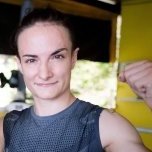


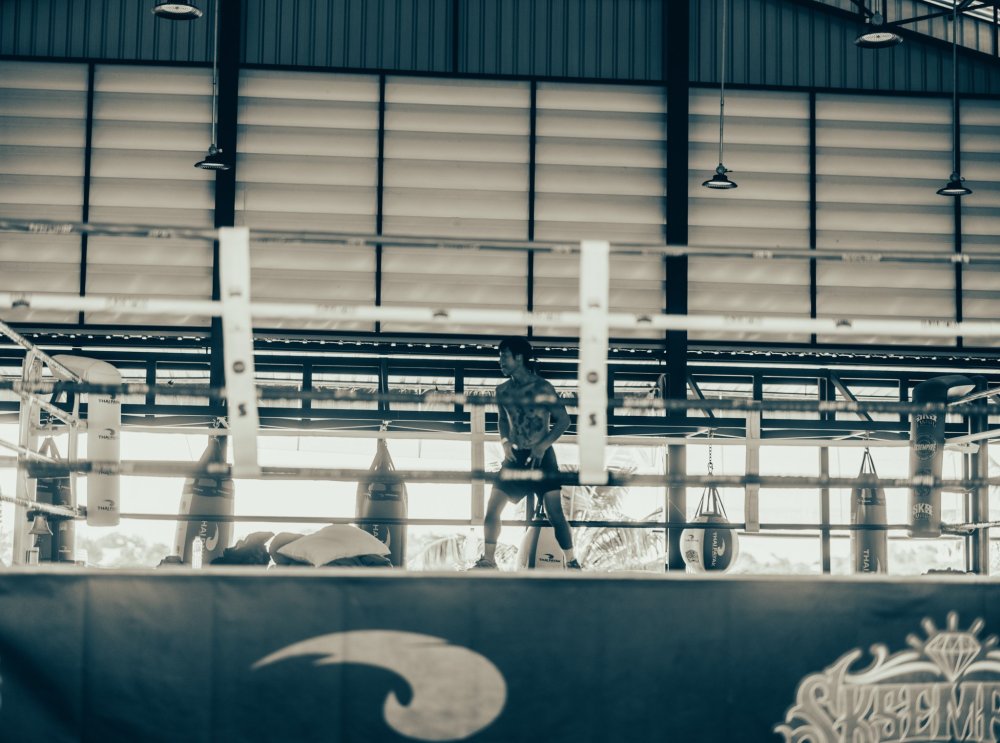
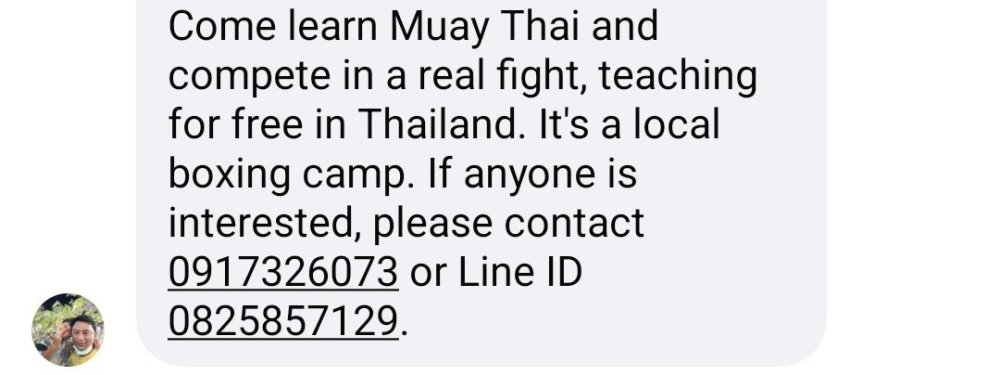
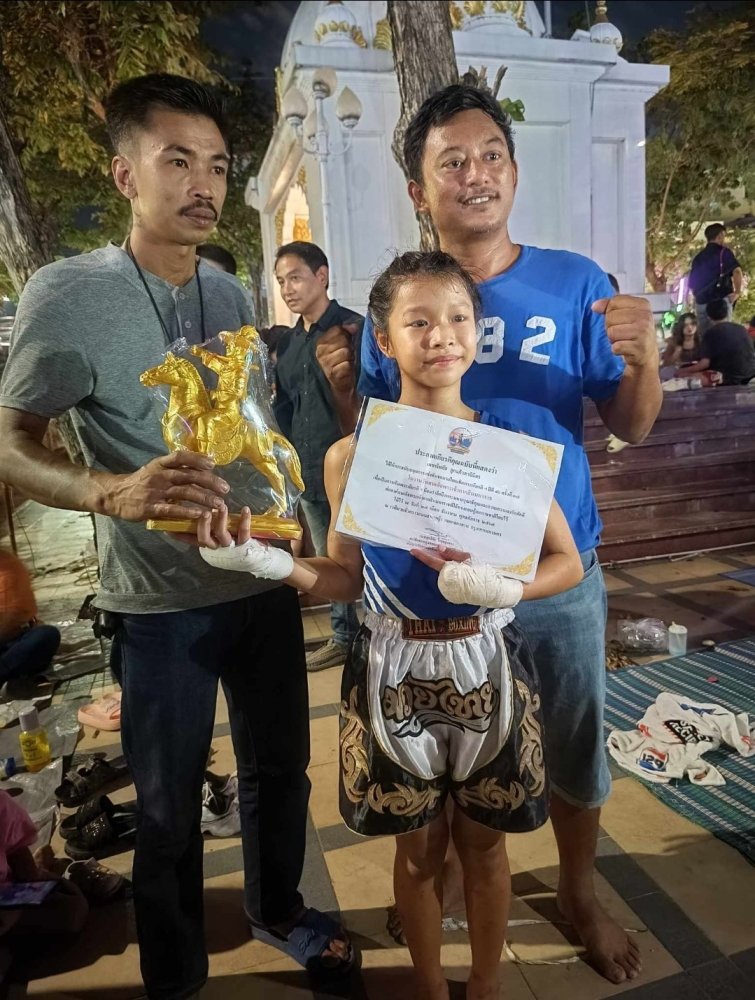
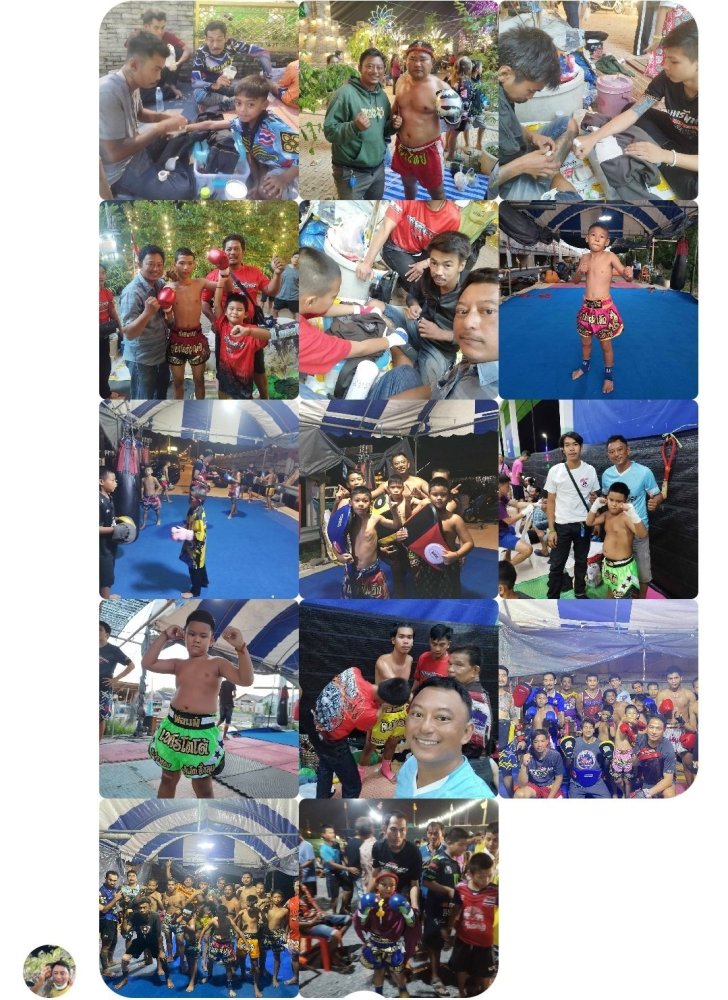
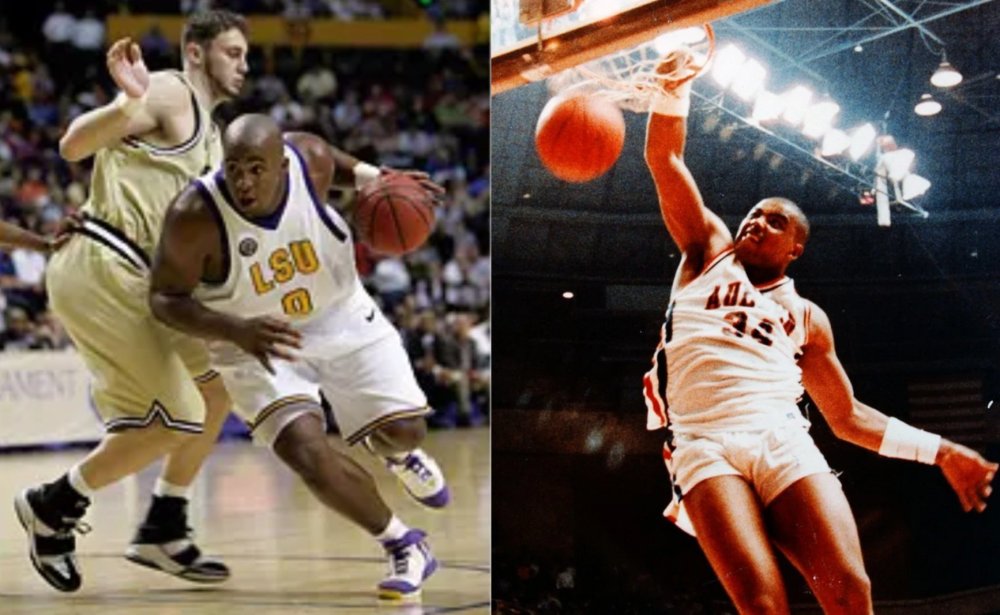

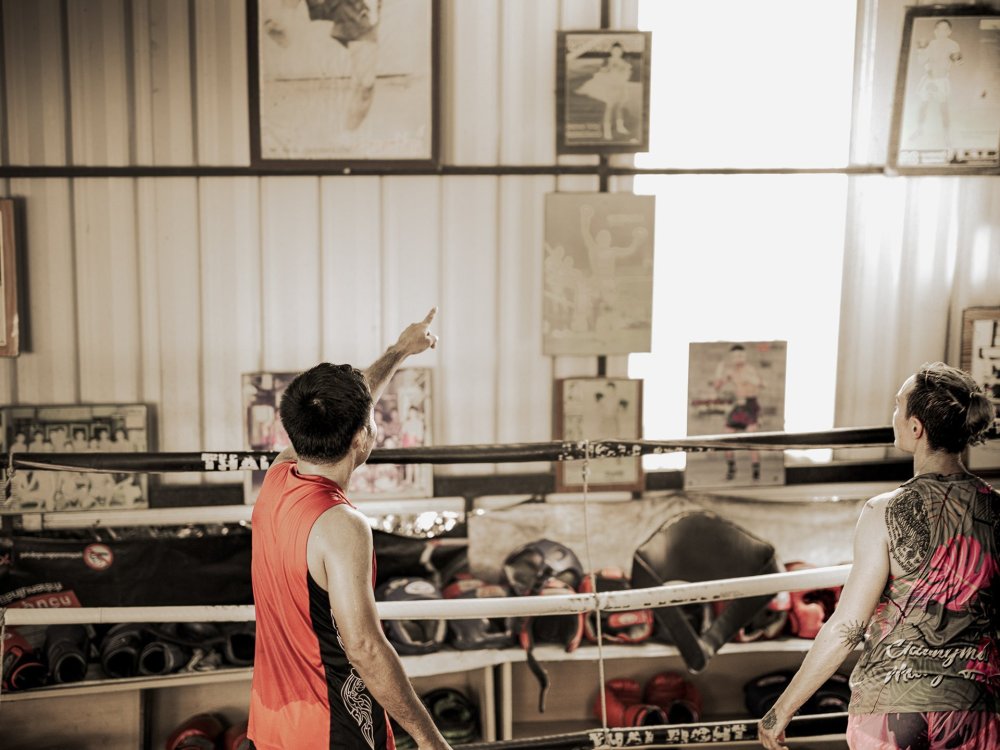
KetSriyapaitheMuayChaiyamasterofArjanSurat.thumb.jpg.63aca732ad49cbd647e506c3d9dd568e.jpg)
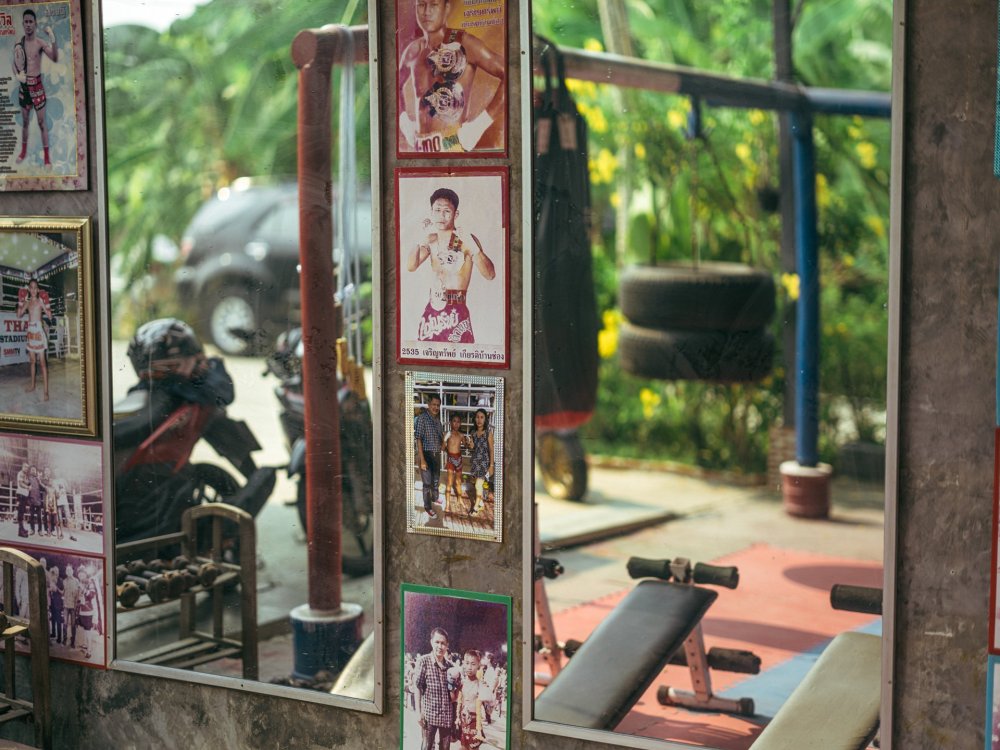
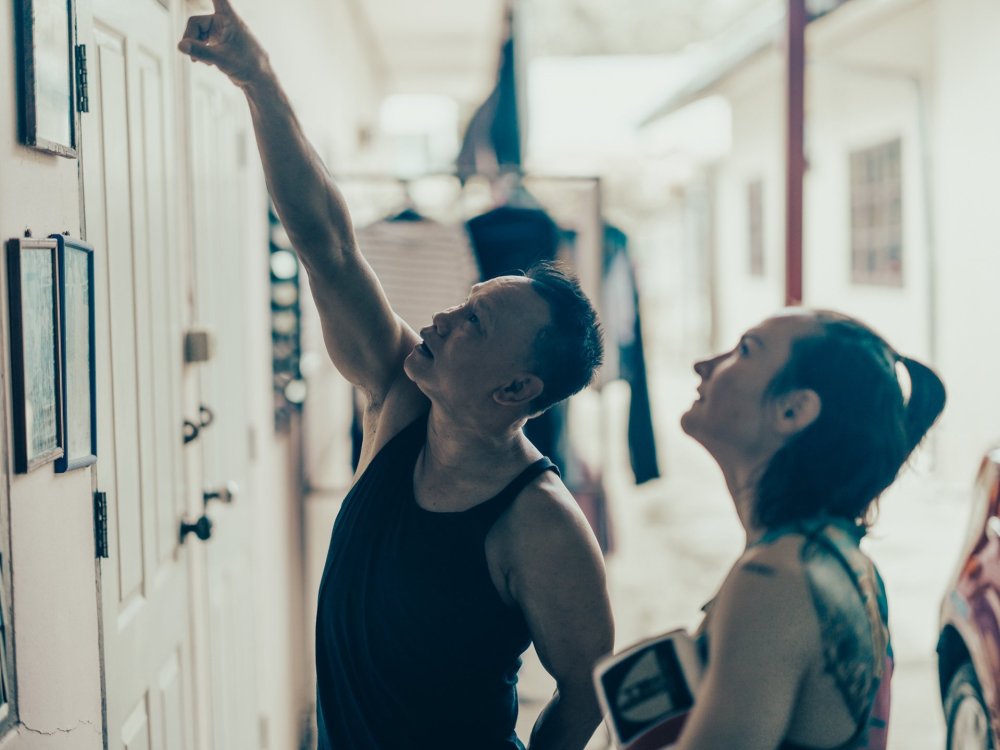
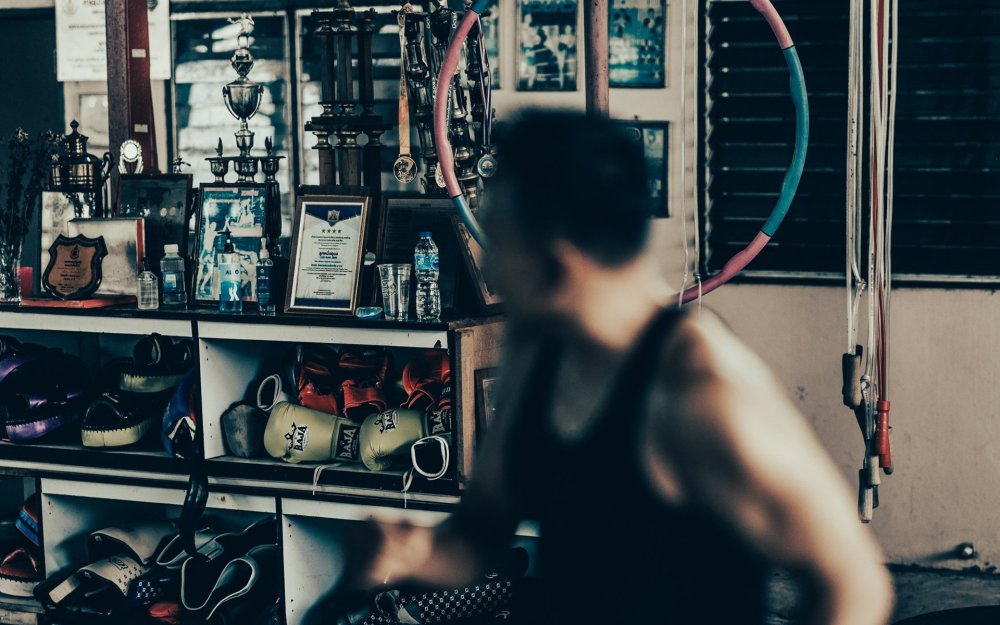
.thumb.jpg.22dda41f389708358121e4107f6eeb88.jpg)
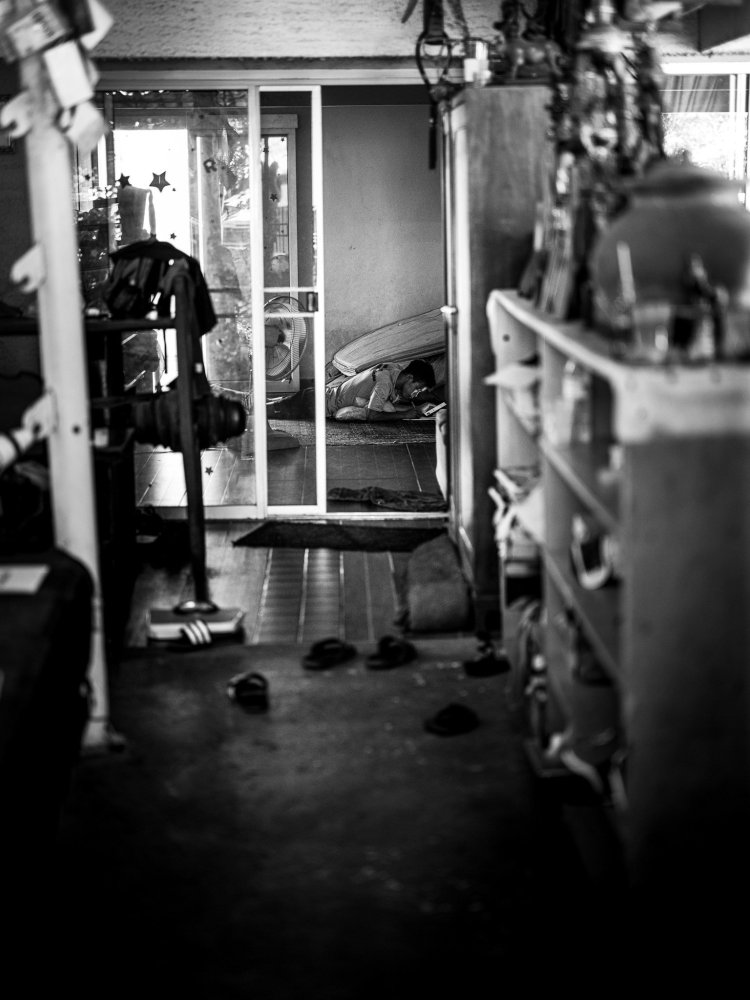
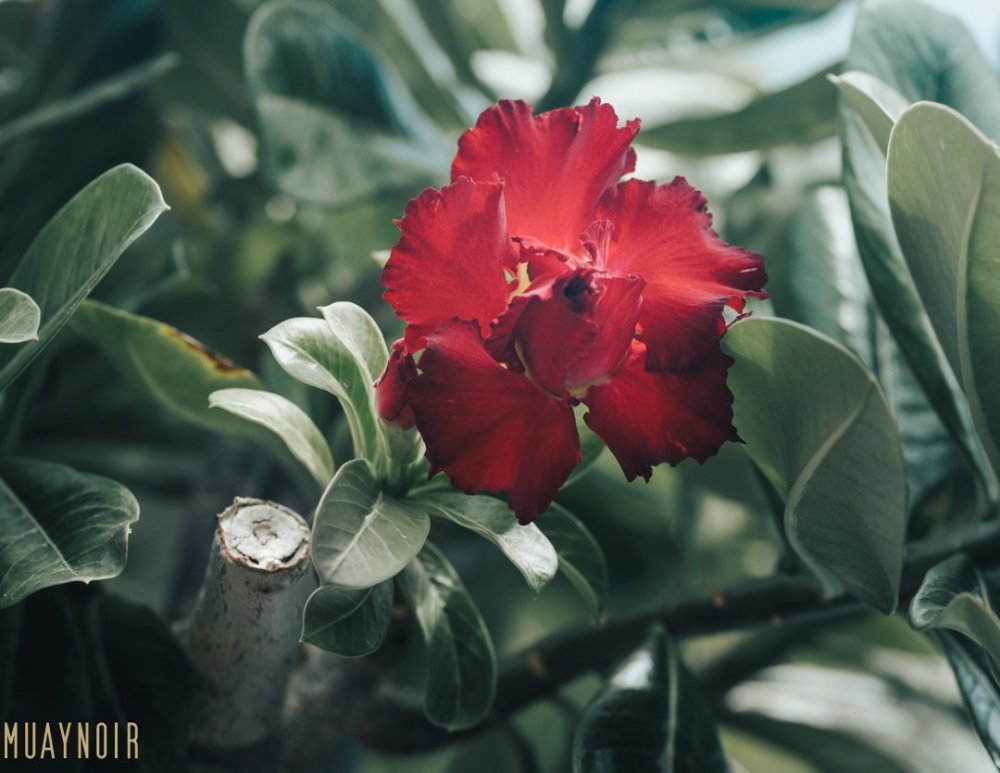
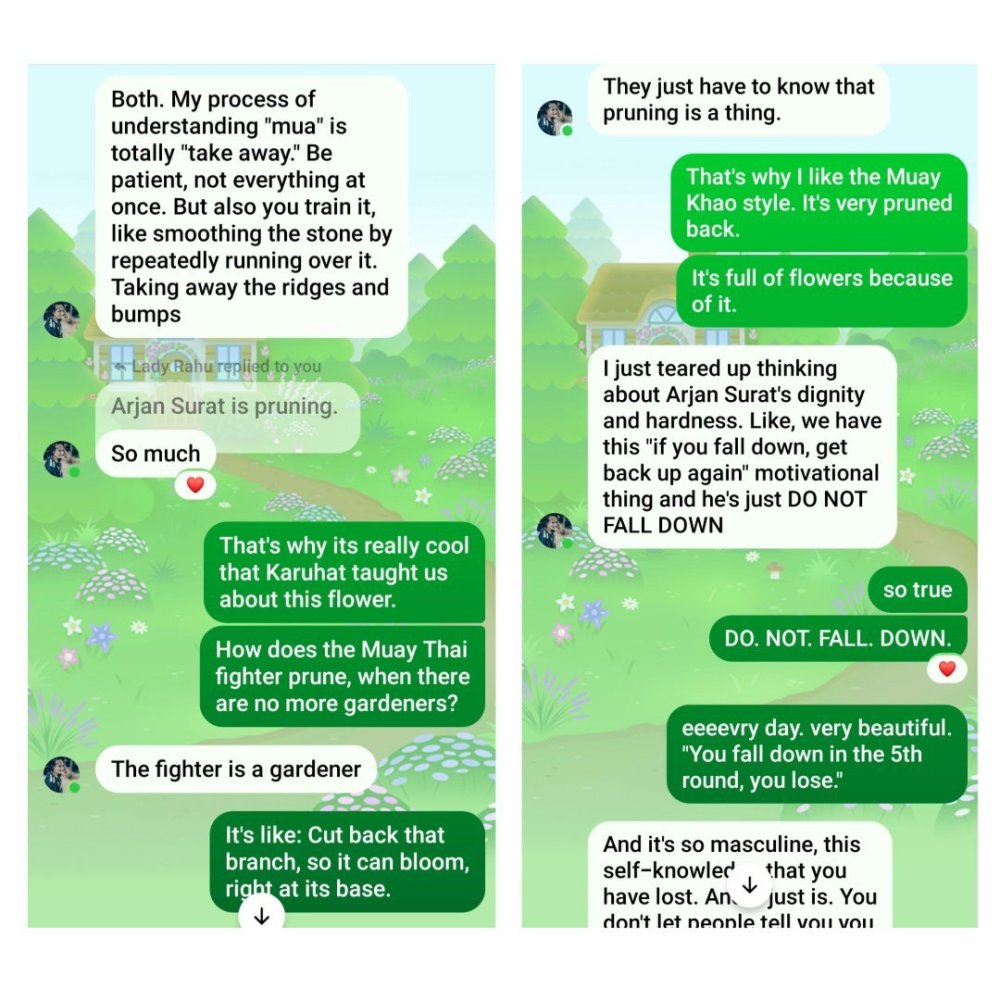
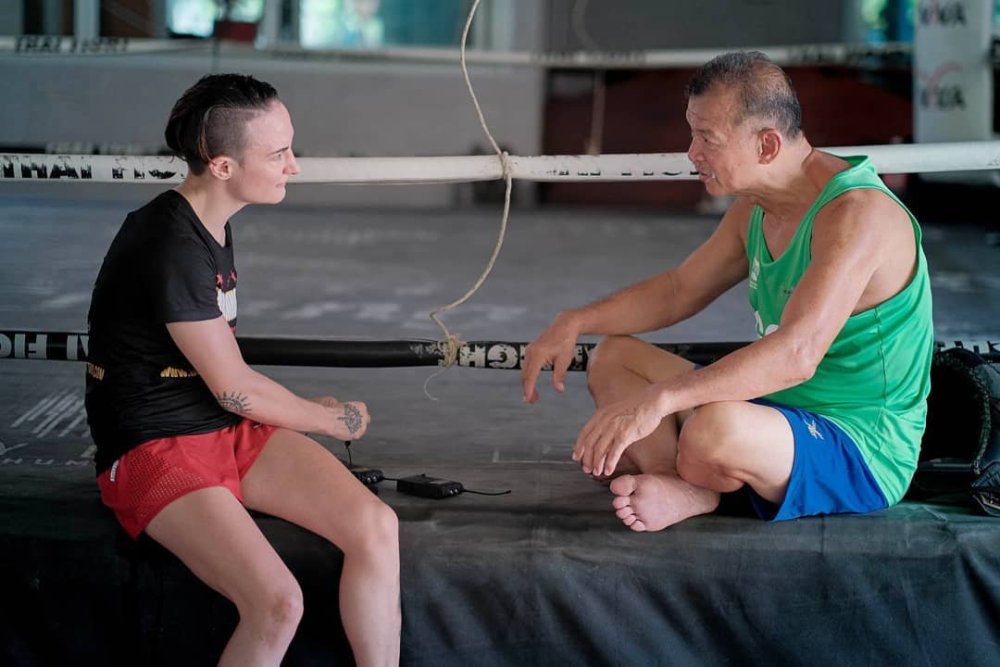
.thumb.jpeg.0922fa64b2c8ee30670c02f9602eca14.jpeg)
